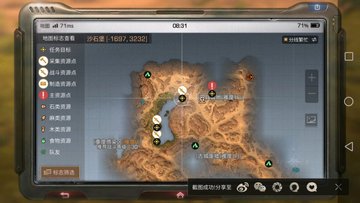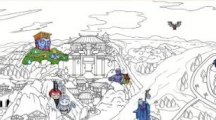关于秦淮画舫的导游词是怎样的
秦淮”当作南京的代名词。【秦淮画舫—伴池—夫子庙照壁—庙前广场—棂星门】各位游客:现在我们来到了秦淮河畔,河中的画防都是仿照明代建筑风格制造的,船头挂有大红彩球和红灯笼。每当元宵节南京人习惯来这里游玩赏灯。这种风气在明代就已盛行,据说明朝建都后,朱元津微服巡察京城。 当他来到秦淮河畔,看到两岸绿树成荫,河水清澈,亭台楼阁,风景宜人,随口说了句:“惜河中缺游船。”皇帝开了金口,左右就连夜差人赶造画舫,以博取皇帝欢心。从此,秦淮画访成了这里的一大特色。尤其到了中秋佳节时分,更是河上水灯万盏齐放,两岸龙灯飞舞,歌声、鼓声、欢声、笑声,连绵不绝,通宵达旦,真可谓“秦淮灯火甲天下”。 难怪南京有“家家走桥,人人看灯”的民谚。我们眼前的这段秦淮河,自宋以后就成了夫子庙(孔庙)成泮池,又称月牙他。古时候皇帝讲学的学宫叫辟雍,诸侯讲学成学宫叫泮宫,夫子庙的学宫相当于诸侯讲学的地方,所以这池称“泮池”。泮池上一般建有三座石桥,按等级而论,县官、学官走中间一座,秀才走两边的桥。 相传古时候有位秀才误上中桥,有犯上作乱之罪,进退两难,只好自己跳进了泮池。再请各位看河对岸的一段朱红色石砖墙,这就是夫子庙的照壁。照壁建于明万历三年(历泽年),长达110米,为全们照壁之冠。各位游客:这座夫子庙始建于东晋成帝咸康三年(337年),当时成帝采纳了王导的建议:“治国以培育人才为重”,决定立大学于秦淮河畔。 原来只建有学宫,孔庙是宋仁宗景拍元年(1034年)在学富基础上扩建而成的。所以夫子庙是一个由文教中心演变而成的繁华闹市,它包括夫子庙、学宫和贡院三大主要建筑群,其范围南临秦淮河北岸,北抵建康路东端,东起姚家巷,西止四福巷,规模庞大。夫子庙虽屡遭破坏,但各代都加以兴修扩建,到清末民初,其楼阁、殿宇的结构和布局堪称东南之冠。 现在的夫子庙建筑,~部分是清代末年重建的,一部分是近几年重建的。请大家回头看,这座楼阁式建筑,叫做奎星阁,它初建于清乾隆年间。这座临街傍水的建筑曾两次被毁,1985年重建。现在我们来到了清辟的庙前广场,广场东西两端竖有两块碑,高有一丈许,上面刻有满汉两种文字“文武大臣至此下马”,表示对圣人孔子的崇敬。 左侧的这座六角重檐亭子叫“聚星亭”,“聚星”取群星集中,人才荟萃之意。建于明万历十四年(1586年),也曾几经兴废,到清同治八年(1869年)才由江宁乡贤朱芙峰等人筹资重建。这是一座在日军炮火中惟一幸存的清代建筑,可惜在1968年被当作“四旧”拆除,1983年又得以重建,恢复了原来的风貌。 广场正中的这座牌坊,叫“天下文枢坊”。请大家继续随我往前走。这座门叫棂星门,这是孔庙的庙门。据传榻星是天上主管教化的星宿,他得人方便高兴。门是石结构的,六柱三门,建于明成化十六年(1480年),后来被毁,又于清同治九年(1870年)重建。不过,现在所见到的极星门是1983年再次重建的。 极星门东西两侧便是东市、西市。
救急啊~急需南京景点英文介绍和翻译.
Confucius[kən’fu∫jəs 孔子] temple[templ寺庙 ] & the Qinhuai river scenic[si:nik风光 ] area[εə riə 地带]
孔庙和秦淮河风光带
1:The Confucius temple, located [lou’keitid位于]at the Qinhuai River scenic[si:nik风景的] area,
孔庙位于秦淮河风光带
2:is a well-known tourist[tu:rist旅游者 ] resort[ri’zэ:t常去度假的地方 ] of the ancient capital Nanjing .
她是古都南京闻名的旅游度假地。
3the river banks of Qinhuai are known for Confucius Temple
秦淮河因孔庙而闻名。
4and jointly[ d3эintli连带地] called the Confucius temple area.
因此也叫夫子庙地区。
5the Confucius temple is no doubt[ daut 怀疑] the most famous.
孔庙无疑是最著名的
6The temple is the place for people to pay worship[wə:∫ip 崇拜] to Confucius.
庙是供人们崇拜孔子的地方
7:The Confucius temple here in Nanjing was first built in 1034
孔庙在南京第一次建于1034。
8and rebuilt[ri:blt重建] in 1986
重建于1986年
9The temple we often mentioned[men∫ən提出] should include[inklu:d包括] three architectural [a:kitekt∫ərə建筑]complexes[kэmpleks群,综合体]:
我们常提的孔庙应该包括三个建筑群:
10the temple of Confucius with the hall of great achievements[ə’t∫i:vmənt大成] as the main [mein主要的]body,
孔庙及主体建筑大成殿
11the palace[pælis宫殿] of learning and the imperial[impiəriəl帝国] examination [igzæmi’nei∫ən考试]center.
学宫和国家考试中心。
12As early as in 337 A.D.[ei’di:公元],
早在公元337年
13but at that time there was only the palace[pælis宫殿] of learning without the Confucius temple.
那时仅有学宫,没有孔庙。
14The temple was built up and extended[ikstendid扩大] on the basis [beisis基础]of the palace of learning until 1034.
直到1034年孔庙才在学宫的基础上建立和扩大起来
15The Confucius temple complex[kэmpleks 复杂] covers [k∧və 包括]the pan[pæn畔] pool[pu:l池],screen[skri:n屏,照壁] wall,the gateway[geitwei通道] of all scholars[skэlə学生,有文化],
孔庙综合包括:泮池、照壁、天下文枢坊、
16juxing[聚星] pavilion[pə’viljən亭],Kuixing[魁星] pavilion, Lingxing[灵星 ] gate,
聚星亭、魁星亭、棂星门。
17the hall of great achievements[ə‘t∫i:vmənt 达成] and the gate etc[ =et cetera等等et’setərə ].
大成殿和大成门等等。
18As the confucius temple in qufu,Shandong province
在山东省曲阜的孔庙
19is built by the side of the pan river,
是建在泮水之滨的
20all the temples of Confucius in the country
所有全国的孔庙
21are built at the riverside
都建在河边
22and the water in front of Confucius temple is called pan pool.
孔庙前面的水叫泮池。
23And this has become a custom[k∧st∂m惯例] through[θru:在期间] long usage[ju:sidЗ惯用法]
这形成了长期的惯例。
24this confucirs temple makes the natural stream[stri:m流动] of the Qinhuai river as its pan pool,
这里的夫子庙把秦淮河流动的水作为它的泮池
25which is also called the pool of crescent[kresnt新月] moon “by the local[louk∂l当地] people.
当地的人们把它叫着月牙池
26Standing at the southern bank of the pan pool is the screen[skri:n屏] wall,
泮池南边站立的是照壁
27which is 110 meters long and 10 meters high.
它110米长,10米高
28it ranks[ræηk最高点] top among all the screen walls across[∂’krэ:s遍布各地] the county.
它位于全国所有照壁之冠
29The wall was built in 1575 and newly renovated [‘ren∂,veit重做]in 1984 .
这个照壁建于1575年,近来重建于1984年
30the function [f∧ηk∫n功能]of the wall
照壁的功能
31was to indicate[indikeit表明] that the confucirs’ learning was too profound[pr∂faund渊博] to be understood by common[kэm∂n普通] folks.[fouk民众]
是表明孔子渊博的学问被普通百姓所接受
32Another function was to cover up遮挡 the main building of the temple,
另一功能是遮挡住寺庙的主体建筑
33so as to以便 give people an impression .[impre∫∂n印象]of its grandeur[’græn dЗ∂辉煌] and magnificence[mæg’nifisns庄严]
以便给人们一个它辉煌而庄严的印象
34The gateway[geitwei入口处] of all scholars[skэl∂学者] was first built in 1586 in an imitation[imitei∫∂n仿制] of that in Qufu.
天下文枢坊始建于1586年仿曲阜天下文枢坊,
35The meaning of the structure[str∧k t∫∂] was to refer[rif∂:归于] to Confucius as the hub[h∧b中心] of all writings and ethics[eθiks道德] in ancient times.
它结构的意思是所有文章和道德的中心都归于孔子。
36lingxing gate is also called the gate of etiquette[eti’ket礼仪]
棂星门又叫礼仪门
37specially built for emperors[emp∂r∂皇帝] to offer[э:f∂提供] sacrifice[sækrifais祭祀] to Confucius .
它是专为皇帝祭祀孔子而建的
38the gate built in front of confucius temple
它建于孔庙前
39implies[implai暗指] the meaning of
它的寓意是
40“people of talent[tæl∂nt天才] coming forth[fэ:θ涌现] in large numbers[n∧mb∂大量]
大量人才涌现
41and stability[st∂‘biliti稳定] of the country.”
国家稳定
42Dacheng gate or the gate of great achievements[∂t∫ivm∂nt达成]
大成门或集大成的门,
43is also called halberd[hæb∂d戟] gate,
又叫戟门
44which is the front door of the Confucius temple.
它是孔庙的前门
45As Confucius epitomized[ipit∂maiz作为缩影] Chinese culture,
作为文化的宿影的孔子
46he was posthumously[pэstjum∂死后] granted[gra:ntid假定] the title[taitl称号] of super saint[seint圣徒] Confucius.
他死后被授予至圣先师的称号
47In the entrance[entr∂ns入口] hall[门厅] of the gate there are four old stone tablets [tæblit碑]:
在大门的入口门厅有四块古石碑
48The tablets of Confucius asking laozi of the ethical[eθiks道德] codes[koud经].[孔子问礼图碑]
一是孔子请教老子道德经的图碑
49It was made in 484 A.D. during the southern dynasty
它是刻于南朝公元484年
50recorded[rekэ:d记录] on the tablet is the personal[p∂s∂nl个人] experience[ikspi∂ri∂ns经验] of Confucius on his visit to Luoyang,
碑上记录的是孔子去洛阳访问的经验
51the capital of the eastern zhou dynasty in 518 B.C.
在公元前518年东周王朝首都
52where Confucius made investigations[investingei∫∂n研究] on the system of institutions[institju:∫∂n制度] of the zhou
孔子研究了周王朝制度
53and went in quest[kwest寻找] of the ways of how to prosper[prэsp∂繁荣] and stabilize[steibilaiz稳定] the country
去寻找了如何繁荣和稳定国家的方法
54and of how to consolidate[k∂nsэlideit联合] the power of slave[sleiv奴隶] owners[oun∂主人] in the lu state[steit国家].
如何在鲁国联合奴隶主的力量
55The tablet of jiqing Confucius temple.
[集庆孔庙碑]
56In 1308 when the yuan dynasty reigned[rein统治] over the country,
1308年,元朝统治全国
57emperor wuzong issued[i∫iu发布] an imperial[impi∂ri∂l帝国] edict[i:dikt布告]
武宗皇帝发布了圣旨
58”Take education as the state administration[∂dministre∫∂n管理] of the empire[empai∂皇权]”
以兴学作士为王政
59In the next fall when the Confucius temple started to be rebuilt ,
第二年孔庙开始被重建
60lu zhi wrote an inscription[inskrip∫∂n碑文] for the tablet.
卢挚为碑撰写了碑文
61but the tablet was not made right away until 22 years later in 1330.
当时没有勒石,直到22年后在1330年
62In the xianfeng years of the qing dynasty,the Confucius temple was burnt down in a war
清朝咸丰年,在战争中被毁,
63and the tablet was missing[misiη失踪]
此碑失踪。.
64during the reconstruction[ri:k∂nstr∧kl∂n重建] of the Confucius temple in 1986, the tablet happened[偶然发生] to be unearthed[∧n’∂:θ发掘] from the underground[地下]
1986年复建文庙时碑在地下被发现
65The tablet of the four saints[封四圣碑]
66In 1331 emperor wenzong of the yuan dynasty granted [gra:ntid加封]the four disciples[di’sai’pl门徒] of Confucius
在1331年元朝文宗皇帝加封孔子的四个门徒
67Yanhui, zengshen, kongji and mengke as 4 saints[] second to Confucius
颜回、曾参、孔伋和孟轲为四亚圣
68and they were carved [ka:v雕刻]on a stone tablet to inform [infэ:m告知]the whole country.
以此刻在石碑上告知全国。
67tablet of madam super saint Confucius.[封至圣夫人碑]
68 In 1331 the wife of Confucius was posthumously awarded the title of Madam Super Saint(孔子之妻被加封为至圣夫人)
1331年孔子之妻被加封为至圣夫人
69and a stone tablet was made for her according to the imperial decree (以此旨勒石刻碑) and erected here side by side with the tablet of the four saints (与封四氏碑并列于夫子庙) .
70Dacheng Hall or the Hall of Great Achievements (大成殿) is the main building of Confucian Temple
大成殿是文庙的主体建筑,
71and the very place to enshrine and worship Confucius (供奉和祭祀孔子的地方).
72 The hall is a double-eaved and gable-roofed structure in ancient imitation (重檐歇山顶仿古建筑),
73Displayed in the hall there is a huge portrait of Confucius (孔子巨幅画像),
which is the largest one through out the country.
Also put on show are the portraits of Yan Hui (颜回), Zeng Shen (曾参), Kong Ji (孔伋) (the grandson of Confucius) and Mengke (Mencius), the four disciples of Confucius as well as a number of ancient musical instruments.
Hung on the inner walls of the hall there are 38 jade-and-jadeite-carved paintings inlaid with gold, jewelry and mother-of-pearl (罗钿) about the life story of Confucius (孔子生平事迹).
In the temple courtyard (庙院) enclosed by roofed corridors, there is a large open-air terrace (露台), which used to be an altar for holding sacrificial ceremony and performance of songs and dance (曾是祭祀和歌舞的地方). on the terrace there stands a huge bronze statue of Confucius. the forehead of the statue appears a unique wisdom-and-foresight of the great thinker (眉宇间透露出伟大思想家特有的睿智), better making a deep impression on visitors.
Juxing Pavilion At the west of the temple square there stands a hexagonal pavilion (the pavilion with its 6 eaves upturned) called “Juxing”. The name of Juxing means “assembly of stars” (群星汇聚) and “a galaxy of talent” (人才荟萃), because all the men of letters or well-educated people were regarded as stars over the sky in feudal China. Juxing pavilion was the place for intellectuals to converge on (聚集) and to learn from each other by exchanging their experience in study (切磋学习心得).
Kuixing Pavilion (now called Kuiguang Pavilion) (魁光阁) at the east of Pan Pool lies the Kuixing Pavilion, which is also called the Pavilion of God of Literature (文星阁). The three-storied hexagonal tower was the place for provincial examination candidates (乡试士子们) to pay worship to Confucius before they sit for imperial examinations (应考前拜孔的地方). Later,the pavilion was turned into a teahouse (茶社) for candidates (考生) to meet friends with tea drinking.
Kuixing is the star at the tip of the bowl of the Big Dipper (魁为北斗星之第一星), one of the 28 constellations over the sky (天上28个星宿之一). It was said to be God of literature dominating the fortune of culture and education (主宰文运之神) and ,Confucius was regarded as the God. In times of imperial examinations (在科举时代), the examination candidates often came to offer sacrifice to Confucius in the hope of successfully passing the imperial examinations and becoming a provincial graduate (以求中举).
The Palace of Learning (学宫) The Palace of Learning is an architectural complex consisting of Mingde Hall or the Hall of Bright Virtue (明德堂), Zunjing Library (尊经阁), Qingyun Tower (青云楼) and Ancestral Temple for Worshiping the Parents of Confucius (崇圣祠) etc.. The Palace of Learning was an institution of higher learning (高等学府) of the prefecture in ancient times, usually built behind Confucian Temple.
Mingde Hall or the Hall of Bright Virtue (明德堂) was the main hall (正堂) of Palace of Learning ,the place for putting up the list of successful candidates (张悬科第题名榜) in the years of the imperial examination system and was also an assembly auditorium (礼堂) for the students to attend lectures on Confucius teachings(圣教)and imperial edicts (上谕) given by assistant instructor(听训导师宣讲圣教和上谕) after their pilgrimage on the first and the 15th day (朔、望日) every lunar month.
Zunjing Library (尊经阁) was a two-storied building with each having 5 rooms (上下两层各五楹). The upstairs was used to collect the Chinese traditional learning of the Ming Dynasty (明代国学),. The downstairs was the lecture hall (讲堂),where assistant instructors (训导师) used to give students lectures.
Qingyun Tower (青云楼) and Ancestral temple of Confucius Parents (崇圣祠)
The Qingyun Tower is a memorial temple (祠宇或祠堂) for enshrining educational inspectors (督学) of the past dynasties (青云楼是供奉历代督学使的祠宇). The Ancestral Temple for Parents (崇圣祠) of Confucius was the place for students to offer sacrifices to Confucius parents. But someone also says it is the Saint-Admiring Temple specially for enshrining the deciples of Confucius (是祭祀孔门的专祠).
群星里怎么让星门连接指定星门
星门造好了就跟其他星门连上了,不能指定链接其他单一的星门
1999年外星人入侵是什么梗
麒麟号舰长董新的与妻书
封神榜各个职业的终极技能是什么
除了姜子牙、周文王、周武王、苏妲己肉身成圣的是李靖、金吒、木吒、哪吒、杨戬、韦护、雷震子七人封神的是这些:雷部二十四位天君正神名讳:邓天君讳忠辛天君讳环张天君讳节古陶天君讳荣庞天君讳洪刘天君讳甫斋苟天君讳章毕天君讳环秦天君讳完主赵天君讳江董天君讳全袁天君讳角知李天君讳德孙天君讳良柏天君讳礼古王天君讳变姚天君讳宾张天君讳绍斋黄天君讳庚金天君讳素吉天君讳立主余天君讳庆闪电神助风神知火部五位正神名讳:尾火虎朱讳招室火猪高讳震主觜火猴方讳贵翼火蛇王讳蛟知接火天君刘讳环”瘟部六位正神名讳:主东方行瘟使者周讳信知南方行瘟使者李讳奇古西方行瘟使者朱讳天麟斋北方行瘟使者杨讳文辉主劝善大师陈讳庚知和瘟道士李讳平”五斗群星吉曜恶煞正神名讳:知东斗星官苏讳护金讳奎古姬讳叔明赵讳丙斋西斗星官黄讳天禄龙讳环主孙讳子羽胡讳升知胡讳云鹏古中斗星官鲁讳仁杰晁讳雷斋姬讳叔升主中天北极紫微大帝姬讳伯邑考南斗星官周讳纪胡讳雷古高讳贵余讳成斋孙讳宝雷讳鹍北斗星官黄讳天祥天罡比干文曲主窦讳荣武曲韩讳升左辅知韩讳变右弼苏讳全忠破军古鄂讳顺贪狼郭讳宸巨门斋董讳忠招摇主群星名讳:知青龙星邓讳九公白虎星殷讳成秀朱雀星马讳方玄武星徐讳坤斋勾陈星雷讳鹏滕蛇星张讳山主太阳星徐讳盖太阴星姜氏(纣后)玉堂星商讳容天贵星姬讳叔乾龙德星洪讳锦红鸾星龙吉公主天喜星纣王天子天德星梅讳伯主月德星夏讳招天赦星赵讳启知貌端星贾氏金府星萧讳臻古木府星邓讳华水府星余讳元斋火府星火灵圣母土府星土讳行孙主星邓氏婵玉博士星杜讳元铣知力士星邬讳文化奏书星胶讳鬲古河魁星黄讳飞彪月魁星彻地夫人斋帝车星姜讳桓楚天嗣星黄讳飞豹主帝略星丁讳策天马星鄂讳崇禹知皇恩星李讳锦天医星钱讳保古地后星黄氏宅龙星姬讳叔德斋伏龙星黄讳明驿马星雷讳开主黄幡星魏讳贲豹尾星吴讳谦知丧门星张讳桂芳吊客星风讳林勾绞星费讳仲卷舌星尤讳浑斋罗?星彭讳遵计都星王讳豹主飞廉星姬讳叔坤大耗星崇讳侯虎小耗星殷讳破败贯索星丘讳引栏杆星龙讳安吉披头星太讳鸾斋五鬼星邓讳秀羊刃星赵讳升主血光星孙讳焰红官符星方讳义真孤辰星余讳化天狗星季讳康病符星王讳佐钻骨星张讳凤斋死符星卞讳金龙天败星柏讳显忠主浮沉星郑讳椿天杀星卞讳吉岁杀星陈讳庚岁刑星徐讳芳岁破星晁讳田独火星姬讳叔义血光星马讳忠亡神星欧阳讳淳月破星王讳虎月游星石矶娘娘死气星陈讳季贞咸池星徐讳忠月厌星姚讳忠月刑星陈讳梧黑杀星高讳继能七杀星张讳奎五谷星殷讳洪除杀星余讳忠天刑星欧阳讳天禄天罗星陈讳桐地网星姬讳叔吉天空星梅讳武华盖星敖讳丙十恶星周讳信蚕畜星黄讳元济桃花星高氏兰英扫帚星马氏大祸星李讳艮狼籍星韩讳荣披麻星林讳善九丑星龙须虎三尸星撒讳坚三尸星撒讳强三尸星撒讳勇阴错星金讳成阳差星马讳成龙刃杀星公孙讳铎四废星袁讳洪五穷星孙讳合地空星梅讳德红艳星杨氏流霞星武讳荣寡宿星朱讳瘟星金讳大升荒芜星戴讳礼胎神星姬讳叔礼伏断星朱讳子真反吟星杨讳星伏吟星姚讳庶良刀砧星常讳昊灭没星房讳景元岁厌星彭讳祖寿破碎星吴讳龙二十八宿名讳(内有八人封在水、火二部管事,俱万仙阵亡):角木蛟柏讳林斗木豸杨讳信奎木狼李讳雄井木犴沈讳庚牛金牛李讳弘鬼金羊赵讳白高娄金狗张讳雄亢金龙李讳道通女土蝠郑讳元胃土雉宋讳庚柳土麞吴讳坤氐土貉高讳丙星日马吕讳能昂日鸡黄讳仓虚日鼠周讳宝房日兔姚讳公伯毕月乌金讳绳阳危月燕侯讳太乙心月狐苏讳元张月鹿薛讳宝随斗部天罡星三十六位名讳(俱万仙阵亡):天魁星高讳衍天罡星黄讳真天机星卢讳昌天闲星纪讳丙天勇星姚讳公孝天雄星施讳桧天猛星孙讳乙天威星李讳豹天英星朱讳义天贵星陈讳坎天富星黎讳仙天满星方讳保天孤星詹讳秀天伤星李讳洪仁天玄星王讳龙茂天健星邓讳玉天暗星李讳新天佑星徐讳正道天空星典讳通天速星吴讳旭天异星吕讳自成天煞星任讳来聘天微星龚讳清天究星单讳百招天退星高讳可天寿星戚讳成天剑星王讳虎天平星卜讳同天罪星姚讳公天损星唐讳天正天败星申讳礼天牢星闻讳杰天慧星张讳智雄天暴星毕讳德天哭星刘讳达天巧星程讳三益随斗部地煞星七十二位名讳(俱万仙阵亡):地魁星陈讳继真地煞星黄讳景元地勇星贾讳成地杰星呼讳百颜地雄星鲁讳修德地威星须讳成地英星孙讳祥地奇星王讳平古地猛星柏讳有患地文星革讳高斋地正星考讳鬲地辟星李讳燧主地阖星刘讳衡地强星夏讳祥知地暗星余讳惠地辅星鲍讳龙古地会星鲁讳芝地佐星黄讳丙庆斋地佑星张讳奇地灵星郭讳巳主地兽星金讳南道地微星陈讳元知地慧星车讳坤地暴星桑讳成道古地默星周讳庚地猖星齐讳公斋地狂星霍讳之元地飞星叶讳中主地走星顾讳宗地巧星李讳昌知地明星方讳吉地进星徐讳吉古地退星樊讳焕地满星卓讳公斋地遂星孔讳成地周星姚讳金秀主地隐星宁讳三益地异星余讳知知地理星童讳贞地俊星袁讳鼎相古地乐星汪讳祥地捷星耿讳颜斋地速星邢讳三鸾地镇星姜讳忠主地羁星孔讳天兆地魔星李讳跃知地妖星龚讳倩地幽星段讳清古地伏星门讳道正地僻星祖讳林斋地空星萧讳电地孤星吴讳四玉主地全星匡讳玉地短星蔡讳公知地角星蓝讳虎地囚星宋讳禄古地藏星关讳斌地平星龙讳成斋地损星黄讳乌地奴星孔讳道灵主地察星张讳焕地恶星李讳信知地魂星徐讳山地数星葛讳方古地阴星焦讳龙地刑星秦讳祥斋地壮星武讳衍公地劣星范讳斌主地健星叶讳景昌地耗星姚讳烨知地贼星孙讳吉地狗星陈讳梦庚古随斗部九曜星官名讳(俱万仙阵亡):斋崇讳应彪高讳系平韩讳鹏主李讳济王讳封刘讳禁知王讳储彭讳九元李讳三益古北斗五气水德星君名讳:斋水德星鲁讳雄率领水部四位正神主箕水豹杨讳真壁水?方讳吉清知参水猿孙讳祥轸水蚓胡讳道元”太岁部下日直众星名讳:斋日游神温讳良主夜游神乔讳坤知增福神韩讳毒龙古损福神薛讳恶虎斋显道神方讳弼主开路神方讳相知直年神李讳丙古直月神黄讳承乙斋直日神周讳登主直时神刘讳洪”知王讳魔杨讳森斋高讳体乾李讳兴霸”招宝天尊萧讳升斋纳珍天尊曹讳宝主招财使者陈讳九公知利市仙官姚讳少司”增长天王魔礼青掌青光宝剑一口职风知广目天王魔礼红掌碧玉琵琶一面职调古多文天王魔礼海掌管混元珍珠伞职雨斋持国天王魔礼寿掌紫金龙花狐貂职顺”主五方主痘正神名讳:知东方主痘正神余讳达古西方主痘正神余讳兆斋南方主痘正神余讳光主北方主痘正神余讳先知中央主痘正神余讳德”云霄娘娘琼霄娘娘碧霄娘娘



















